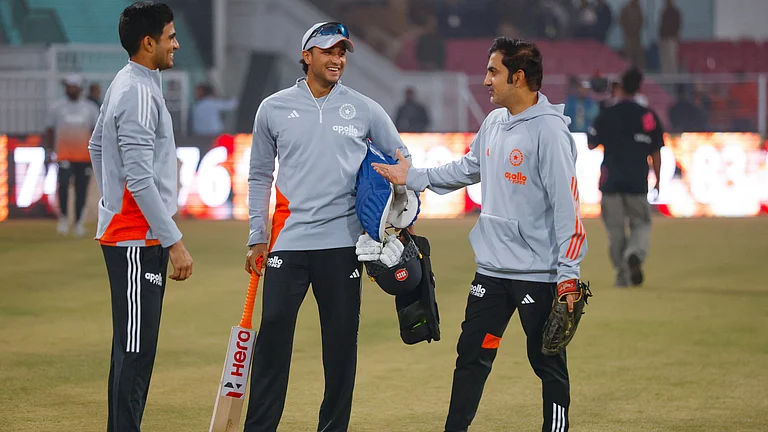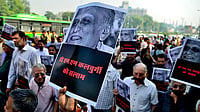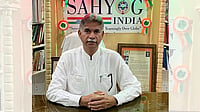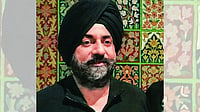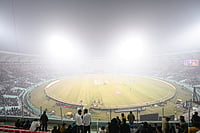Posters showing development work at Sangwali village on the Jammu-Srinagar highway occupy pride of place on the walls of the constituency office of Jammu MP and MoS at the PMO, Jitendra Singh. Those from the constituency visiting New Delhi have seen the same ‘Adarsh Gram’ posters in the minister’s North Block office, too. Residents of the ‘model village’—one of five the minister has ‘adopted’ so far—are not amused, though. Because when you scratch the surface of the ‘model’ claims, all you see is deceit.
For instance, what passes as street lights in the posters are actually lamps installed in a park, while there are none in the rest of the village. The park had been laid out during the reign of the UPA to commemorate an army officer, Lieutenant Sushil Khajuria, who died in an encounter with militants in September 2011.
The other development works shown in the posters, too, are not from Sangwali but its adjoining villages, the residents point out. There is also a photograph captioned “Journey of self-help groups in one year, skill development and self-employment” even though villagers claim weaving bamboo baskets is their traditional occupation and the scheme has done nothing so far to help them hone their skills, modernise the craft or market their goods.
Clearly, the posters give a misleading picture of the ‘model village’, which does not even have a motorable approach road, piped water supply or a functioning health centre. “After sunset, women do not dare walk to the national highway that is hardly 3 km away. And the primary health centre remains locked most of the time,” says former sarpanch Deewan Khajuria, who is now a member of the J&K State Advisory Board for the Development of Kisans. “And ever since the minister adopted our village last year, the government has not spent a penny on its development. He did come here on a visit once and the officials of the local administration held 60-odd meetings in the panchayat office. That is all that has happened so far. There’s almost nothing to show on the ground.”
The villagers also refute the claims made by the minister’s local office that lanes have been laid and drains have been dug. In an area facing shortage of water for both irrigation and drinking, it’s no surprise that people put piped water right at the top of their wish-list and are left embittered when claims of development are made with nothing to address their water woes.
So, what exactly is the ‘Adarsh Gram’ scheme? There are actually two such schemes: the Pradhan Mantri Adarsh Gram Yojana (prime minister’s model village scheme) introduced by the UPA government and the Saansad Adarsh Gram Yojana (MP’s model village scheme) launched by Prime Minister Narendra Modi in 2014. While the first is meant for villages where Dalits comprise half or more of the population, the other involves MPs selecting any village other than the one they come from. In fact, Modi’s scheme envisaged every MP adopting one village and turning it into a model village by 2016. They are expected to adopt two more in 2017 and transform them by 2019. The goal is to have eight model villages per MP by 2024.
So, where will the funds come from? Therein lies the rub as no separate allocations were made for Modi’s scheme, leaving MPs to tap into existing sources of funds such as the MPLAD (MP Local Area Development) scheme. Fearing that it would lead to a situation where development of the villages adopted for the new scheme would depend on diverting funds from elsewhere, several MPs had raised doubts about its viability. For instance, Tathagata Satpathy, BJD MP from Orissa, had said, “There are 3,000 villages in my constituency and I am not really looking forward to developing just eight of them.”
In a way, then, Jitendra Singh’s predicament points to the very real practical problems involved in implementing the half-baked scheme. The Jammu MP has already adopted five villages instead of one. While his office is guilty of building up expectations to unreasonable heights, it is the district officials who are facing the brunt of the villagers’ disappointment.
The first of the five villages Singh adopted was Saddal, an isolated Himalayan hamlet in Udhampur district. A landslide in September 2014 had buried 40 villagers and displaced over 130 families. The Jammu MP was quick to adopt the village and, in January 2015, he declared that it would be developed as the state’s first ‘smart village’, where villagers would soon be able to access every facility that is available in small towns. He promised that a training institute would be set up where villagers can learn tailoring, computers and mobile phone repairing.
Fifteen months after the announcement, not much has changed in Saddal. The government has not even made arrangements to provide food to the villagers who lost their farmland, livestock and homes.
“At least 130 families were rendered homeless by the landslide. It wiped out the entire village,” recalls sarpanch Ramesh Singh. “An NGO built 22 temporary shelters in the adjoining area but they are too few to accommodate all the displaced people. As many as 45 families have been camping in a temporary shelter in Sui near Udhampur town. Some families are putting up in the local community hall and others have been living with their relatives ever since.”
From the time he adopted Saddal, Jitendra Singh has visited the village twice. But the sarpanch says the visits haven’t really helped the villagers as all they got were one more promise. “We were told that a new colony would be built for the residents of Saddal, but no one knows when and where it would be built,” says Ramesh.
Officials working for the minister, however, are quick to list the other ‘model villages’ and plans to bring in more villages under the scheme. “Besides Saddal and Sangwali, the minister has adopted Bhattan in Kishtwar district and Humble in Doda district under the Saansad Adarsh Gram Yojana,” says Sanjeev Sharma, in-charge of the Jammu office of the minister. “Plans to extend the scheme to more villages are in the offing. The idea is to implement all the state and centrally sponsored welfare schemes such as Pradhan Mantri Jan-Dhan Yojana, Suraksha Bima Yojana and Swachh Bharat Abhiyan. We want to ensure basic education to all the villagers so that they are able to sign the documents while filling out forms instead of putting the thumb impression, for availing the benefits of these schemes.”
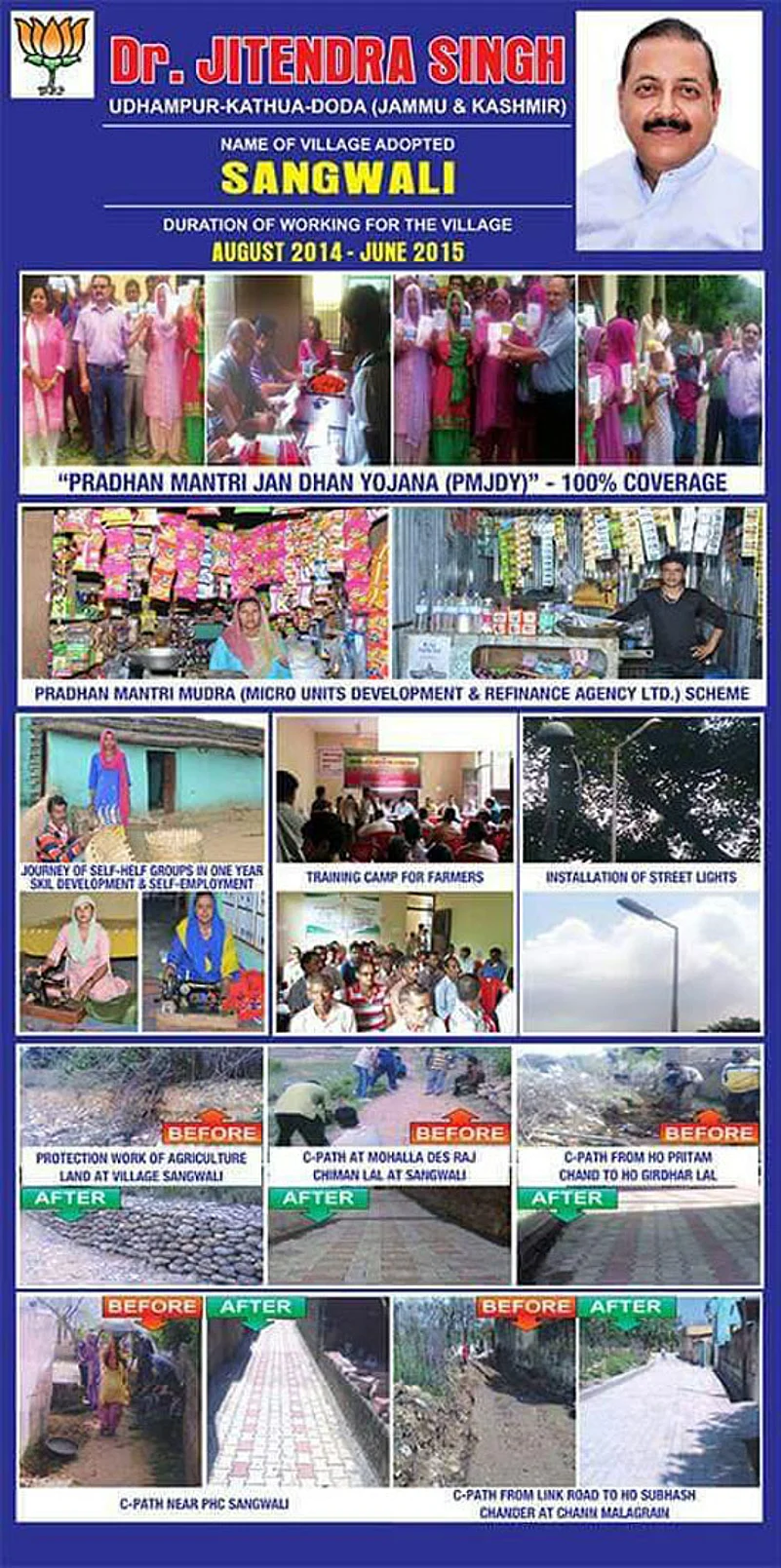
All Lies? A poster with misleading info on development work in Sangwali
Asked about the widespread discontent in the adopted villages, a defensive Sharma says, “The minister can’t do everything in these villages on his own. He has the whole country to look after. He can only provide the right environment for development with the help of NGOs and business houses.”
On Saddal, he admits sheepishly, “It is not possible to build a new village at the site (of the buried village). So we have set up at least 25 temporary shelters in the adjoining area where some families have been accommodated.” About the 45 families that migrated to Sui, he says, “No one compelled them to settle there. They have been living in Sui of their own free will.”
Contrary to the claims of villagers, Sharma says, “In Sangwali, the minister has spent at least Rs 37 lakh on lanes and drains.” And he ends with a flourish: ‘The thrust is on enabling people to become self-sufficient. We can develop our country in an adarsh way only when we have adarsh villages. That is Modiji’s vision.” Wonder what the villagers would say to that.
By Ashutosh Sharma in Jammu








